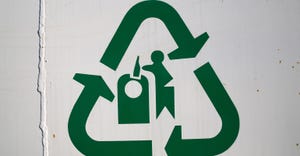Among other findings, the study concludes that establishing commercial waste collection zones could reduce truck traffic and greenhouse gas emissions.
Updated with quotes from Sanitation Commissioner Kathryn Garcia.
The City of New York Department of Sanitation (DSNY) and the Business Integrity Commission (BIC) have released the findings of a study that recommends that the city move ahead with implementing commercial waste collection zones.
Among other findings, the study concludes that establishing commercial waste collection zones could reduce truck traffic associated with commercial waste collection by 49 percent to 68 percent and reduce greenhouse gas emissions by 42 percent to 64 percent.
The study also found that New York’s current open-market commercial waste system “generates excess truck traffic, is highly concentrated among a few carters, has little transparency in pricing and prevents private carting companies from achieving efficiencies that allow investments in recycling initiatives or cleaner trucks.”
In a zone collection system, the city would be divided into zones with contractors bidding to serve certain sectors within those zones. Currently, there are no such restrictions with businesses free to contract with whichever hauler they chose.
The study, which was commissioned last October, assessed several key areas including economics, mileage, emissions and industry safety. The study focused on 90 companies licensed by the BIC that collect waste and recycling from approximately 107,800 customers in New York City.
“The magnitude of the improvements in air quality and reduction in truck traffic coupled with the projected stable pricing for businesses the study found are compelling reasons for implementation of commercial waste collection zones,” Sanitation Commissioner Kathryn Garcia said in a statement. “This study is the first step toward developing a more efficient and effective commercial waste collection system in New York City for businesses, employees and the public at large. We are excited to work with City Council and industry partners to develop a comprehensive plan to achieve these environmental benefits while also improving safety standards for workers and achieving our zero waste goals.”
A 12-page executive summary highlighted some key takeaways:
The industry is predominantly privately owned, with nearly half of the approximately $500 million in local revenues collected by non-NYC carters.
The market is highly concentrated and reflects a ‘long-tail’ dynamic, with a few carters holding the majority of customer accounts and collecting a significant proportion of local revenues.
This market concentration exists in every borough, with a few carters collecting 90 percent of the market and many carters competing for the last 10 percent of the market.
While large carters naturally have a widespread geographical reach, nearly 40 percent of small carters operate in a dispersed manner by covering three or more boroughs.
The economics of commercial waste collection requires carters to provide comprehensive services and serve a diverse customer base, with 80 percent of carters providing both putrescible and recycling pickup services and 70 percent of carters serving more than five customer types.
Carter-customer relationships are generally direct, informal and can change often.
Carters operate on very thin margins, with half reporting an operating loss in 2013.
The solid waste collection industry in NYC has seen relatively strong employment and wage growth in recent years.
While wages are relatively high at the occupational level, earnings can vary widely.
In terms of mileage, the study found that the private carting industry currently contributes approximately 23.1 million vehicle miles traveled annually to the streets of New York City and the adjacent counties. Moving to a zone system would reduce that amount by 49 percent to 68 percent, according to the study’s estimates.
In terms of rates:
When Local Law 42 came into force in 1996, BIC (known as the Trade Waste Commission at the time) set maximum rates at $14.70 per cubic yard of loose waste and $46.70 per cubic yard of pre-compacted waste. In 1997, rates were lowered to $12.20 and $30.19, respectively. In response to carter concerns about the higher costs of servicing heavy or wet waste, the option of a weight-based rate, set at $8.00 per 100 pounds, was introduced in 2003. At the same time, the pre-compacted waste rate was eliminated. Subsequently, the rate caps were adjusted in late 2008 and again in 2013. They are currently at $18.27 per cubic yard and $11.98 per 100 pounds of waste. In February 2016, BIC proposed a rate increase by 3.3 percent to $18.87 per cubic yard and $12.38 per 100 pounds respectively.
However, among the study’s findings is that commercial customers in New York City pay an average rate of $12.68 per cubic yard, approximately 30 percent lower than the rate cap set by BIC of $18.27 per cubic yard.
The study found that while moving to a zone system could be more efficient, it would lead to some reduction in demand for workers. The study says, “Based on the routing analysis, the zone system would require 43 fewer routes per day, a decrease of 13 percent. Intuitively, this increased efficiency would likely lead to a reduction in demand for drivers and helpers.”
The industry’s two major associations, the National Waste & Recycling Association (NWRA) and the Solid Waste Association of North America (SWANA), were quick to respond to the news.
“Shifting to a district-based system of commercial waste services would constitute a major change with a multitude of impacts—both known and unknown; the next phase of discussions must give due consideration to alternate paths to achieve mutual goals, as well as carefully assess the trade-offs between various options,” says Kendall Christiansen, manager of NWRA’s New York City Chapter. “New York City is well-served by a robust and competitive marketplace that already is substantially consolidated and efficient, with customer choice the keystone of that system. We welcome the opportunity to review the city’s initial analysis, and work with the city and interested stakeholders to consider options for further improving the performance of the city’s waste and recycling sector.”
"SWANA was briefed earlier this week by DSNY Commissioner Garcia concerning the study,” SWANA Executive Director and CEO David Biderman says. “We look forward to working with DSNY, other city officials and our members as the city moves forward on this complicated issue."
The Partnership for Working Families, which launched the national Transforming Trash campaign in 2011, applauded the findings. In 2014, it helped launch the Transform, Don’t Trash NYC coalition anchored by PWF affiliate ALIGN. The New York group also includes the International Brotherhood of Teamsters Joint Council 16, the New York City Environmental Justice Alliance and New York Lawyers for the Public Interest.
“The debate on how to pick up and manage urban trash and recycling is over,” Partnership for Working Families Executive Director Nikki Fortunato Bas says. “The two biggest cities in our nation agree; a new, smarter system delivers for us all. Working people and communities have been heard. Implementing this system will mean better wages and safer jobs for those who collect our waste, healthier air for our residents, far less waste contributing to climate change and less traffic in our neighborhoods. The momentum to fix our broken waste management system is spreading across the country and our most innovative cities are leading that charge.”
The study was conducted by a team of consultants that included BuroHappold, Sam Schwartz Engineering, Appleseed, and Paul Carpenter Associates.
Additional resources:
About the Author(s)
You May Also Like




